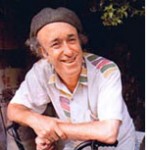By Dan Bloom

CHIAYI CITY, Taiwan –I’m on the email line with Paddy Hernon in Canada, and he’s giving me a brief introductory-level tutorial on the Hebrew language. As a teenager in the early 1960s, three days a week after regular school was over, I hopped on a yellow school bus with the designatation “United Hebrew Schools” on its side and went to classes at the local temple.
Hebrew School was fun and I loved it. I also fell in love with the Hebrew alphabet and at various times with classmates Barbara Weisman, Connie Levin and Laura Mendelson.
Those were the days.
Now I’m an alter cocker in Taiwan in his mid-60s, and Paddy Hernon in Vancouver is telling me a few things about Hebrew words. He was in Israel in the late 1960s and early 1970s, he tells me, and had previously been there just at the end of The Six-Day War in 1967 working as a freelance photographer.
When asked what brought him to Israel again in 1969, the same year I was there, he replied: “How I ended up in Israel after the war is a long story, but it had a lot to do with far too much rain in Vancouver in the month of October of 1969. As to my origins, my father was Irish and my maternal grandmother was rumored to be Jewish.”
“Everything in the Hebrew language is based on three ‘otiot shoresh,’ or three root letters,” he tells me. “Any Hebrew word will have three root letters that, depending on the way they are used, will indicate what is meant within the concept that they relate to.”
This I did not know.
“There are seven verb forms,” Paddy went on. “One form is the ‘hitpael’ form. This is used when one does something to oneself, such as getting dressed.”
So far, so good: Three root letters, seven verb forms.
Then Paddy tells me a funny story, and it brings back memories of my days of lounging on the beach in Tel Aviv in that summer of 1969. I spent a month in Israel, flying in on an plane from Iran, and leaving by a car ferry from Haifa for Greece, and I met my Israeli aunts and uncles that summer, too.
Paddy is telling me about a new word in English that I had recently learned via an online language newsletter — “apricate” — which means something like, from its roots in Latin, to “bask” in the sun, to sit in the sun, to grow bigger in the sun, as plants do.
It turns out that in Israel there is a species of lizard called the Agama lizard. In Hebrew, the learned Paddy tells me it’s called “chardon” and he notes that it has those three root letters, in this case: “ch” and “r” and ”d.”
“Can you guess what the Hebrew slang expression, ‘Ani mitcharden’ means?” Paddy asks me. I reply that my Hebrew is very rusty and that I have no idea.
“It means ‘I am suntanning myself,” sitting in the sun, perhaps on a beach or in a backyard patio, and a literal translation would be “I lizard myself’.”
That’s very interesting, I think to myself: “ani” (I) “mit-charden”
(like a lizard).
“Another very common action using the ‘hitpael’ form in Hebrew is ‘ani mit-labesh’ (‘I dress myself’) and relating to clothing,” Paddy adds.
“However, in this case the action is simply done to oneself and not back and forth with another person,” he explained.
Then I learn something else about all this.
It turns out that the French have a very interesting verb for basking in the sun — ”lézarder” — and as you guess from the similarity to English, it means, literally, “to lizard.”
So maybe the Hebrew slang term “ani mit-charden” comes from French immigrants to Tel Aviv? Could be.
I love language. Living in Asia since 1991, I have been picking up my fair share of Japanese and Chinese and Cantonese and Hoklo Taiwanese.
Language makes the world go round. It also livens things up.
“Do you lizard?”
*
Bloom is a freelance writer based in Taiwan who is an inveterate web surfer. Your comment may be posted in the space provided below or sent directly to the author at dan.bloom@sdjewishworld.com